Vehicle impact on safety barriers
The objective of this project is to develop a new composite safety barrier to replace the existing steel safety barriers in South Korea. Both experimental testing and numerical simulations were conducted to investigate the energy absorption capability of the newly developed laminated composite safety barriers.
The safety barrier was subjected to the impact of passenger cars (1.3T Ford Taurus model) and trucks (8T Ford truck) at the initial velocities of 100 km/h and 80 km/h, respectively. The impact angles are 150 and 200 for the passenger car and truck, respectively. The performance of steel safety barriers was also simulated for comparison purposes.
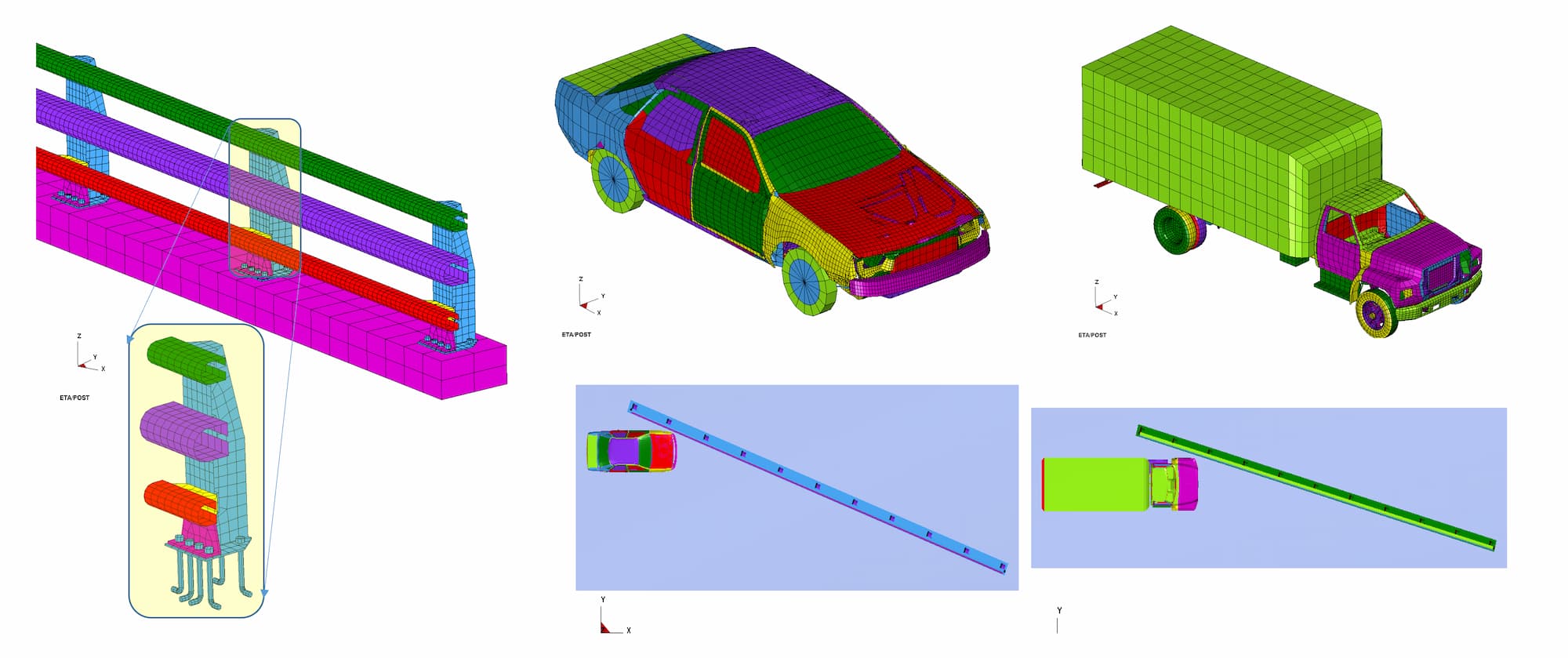
The simulation results generated by LS-DYNA indicated that the composite safety barrier satisfied all performance criteria of vehicle crash such as the deformation, the occupant protection, and the post-crash vehicle behavior. Although the steel safety barrier did meet the performance criteria of occupant protection and post-crash vehicle behavior, it did not meet the deformation performance. In all performance evaluations, the composite safety barrier exhibited a superior performance in comparing with the steel safety barrier. Detailed results can be found in this conference paper (Link).
Car impact on steel barrier 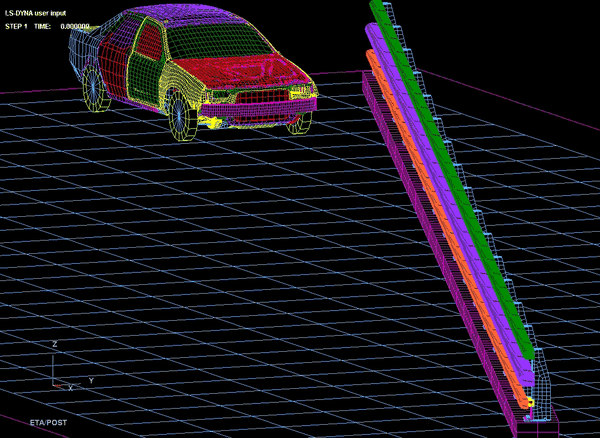 | Truck impact on steel barrier 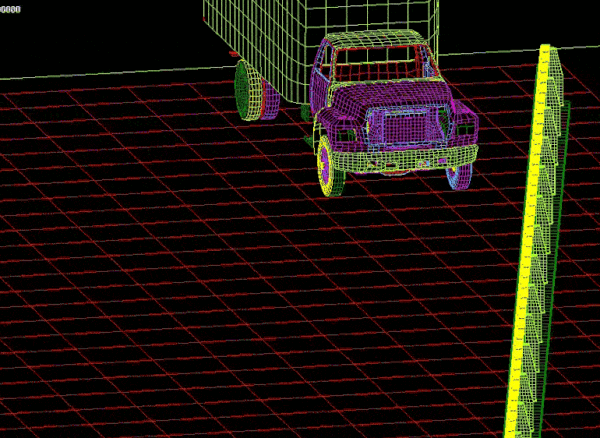 |
Car impact on composite barrier 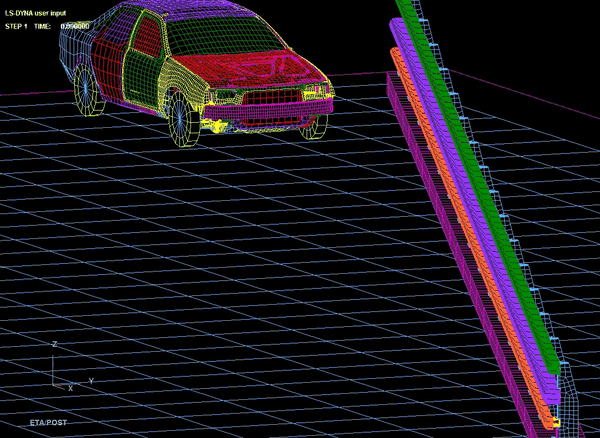 | Truck impact on composite barrier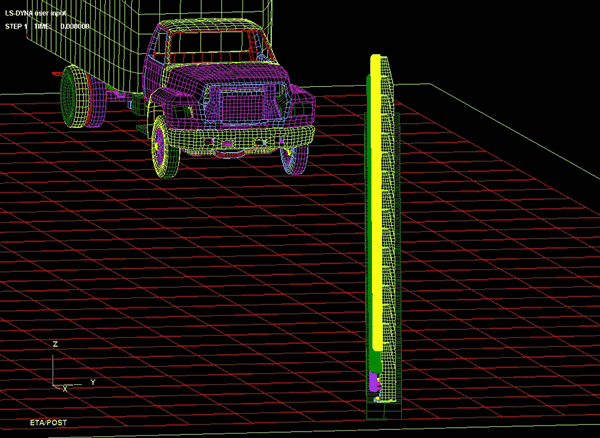 |